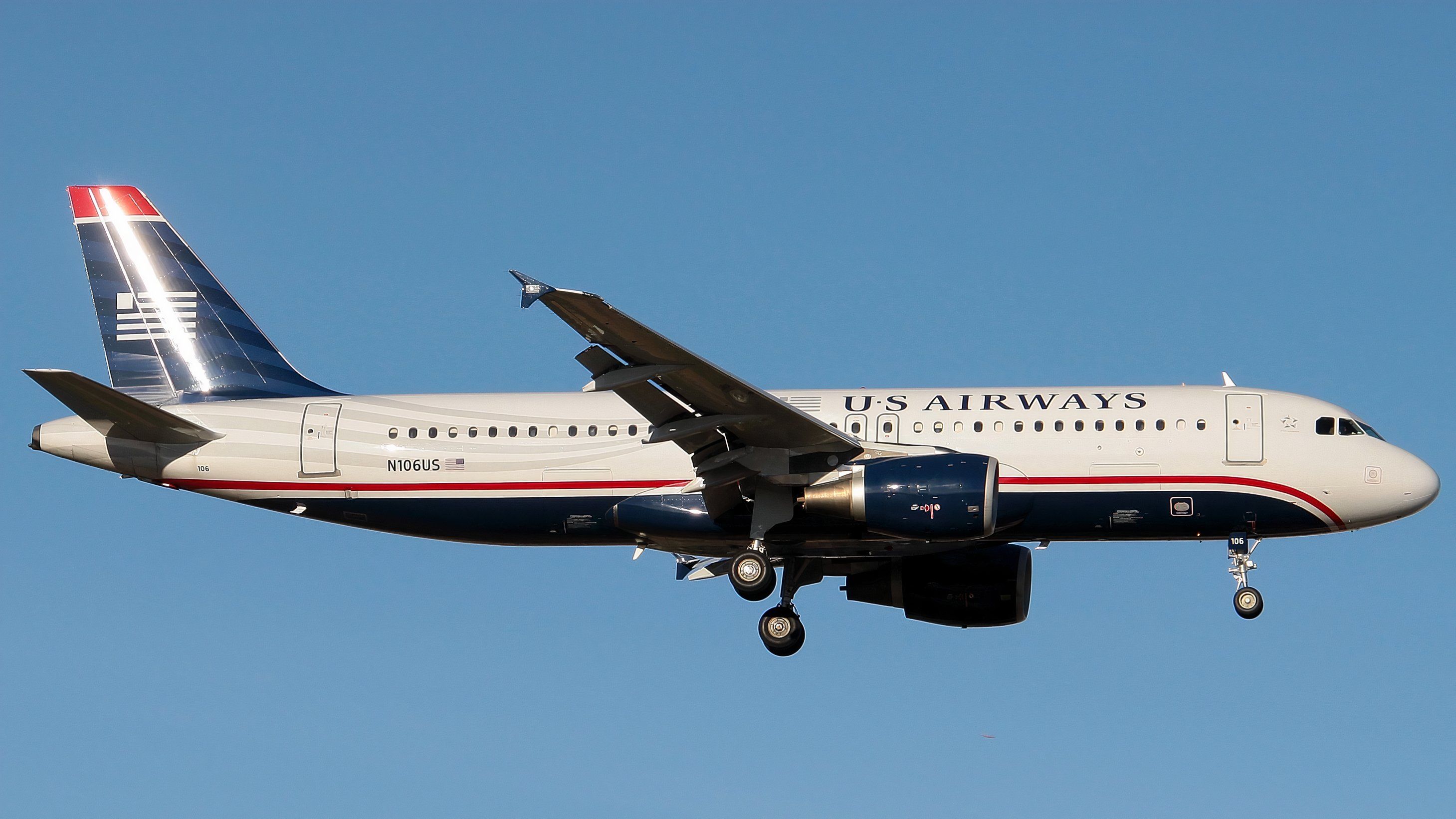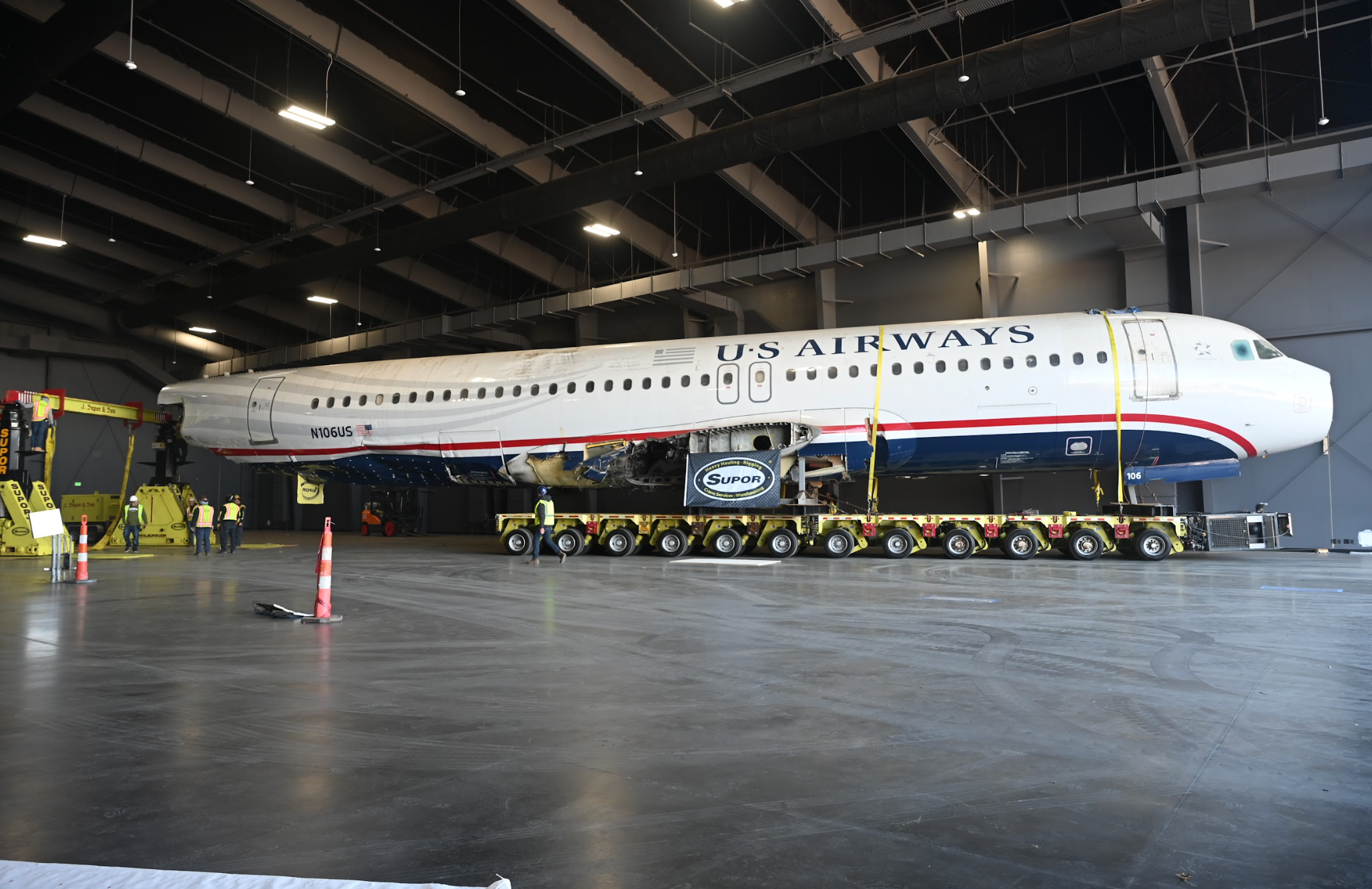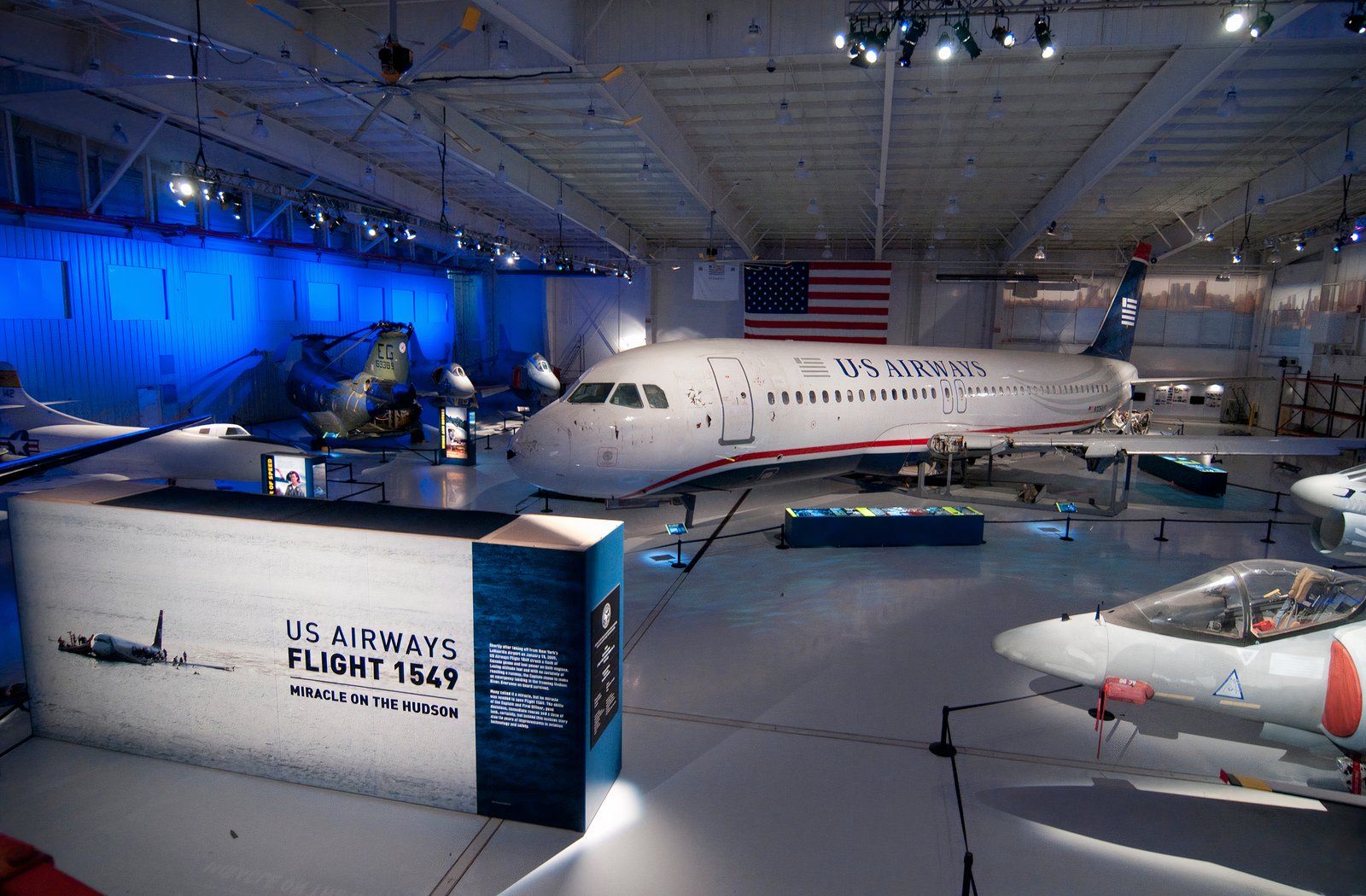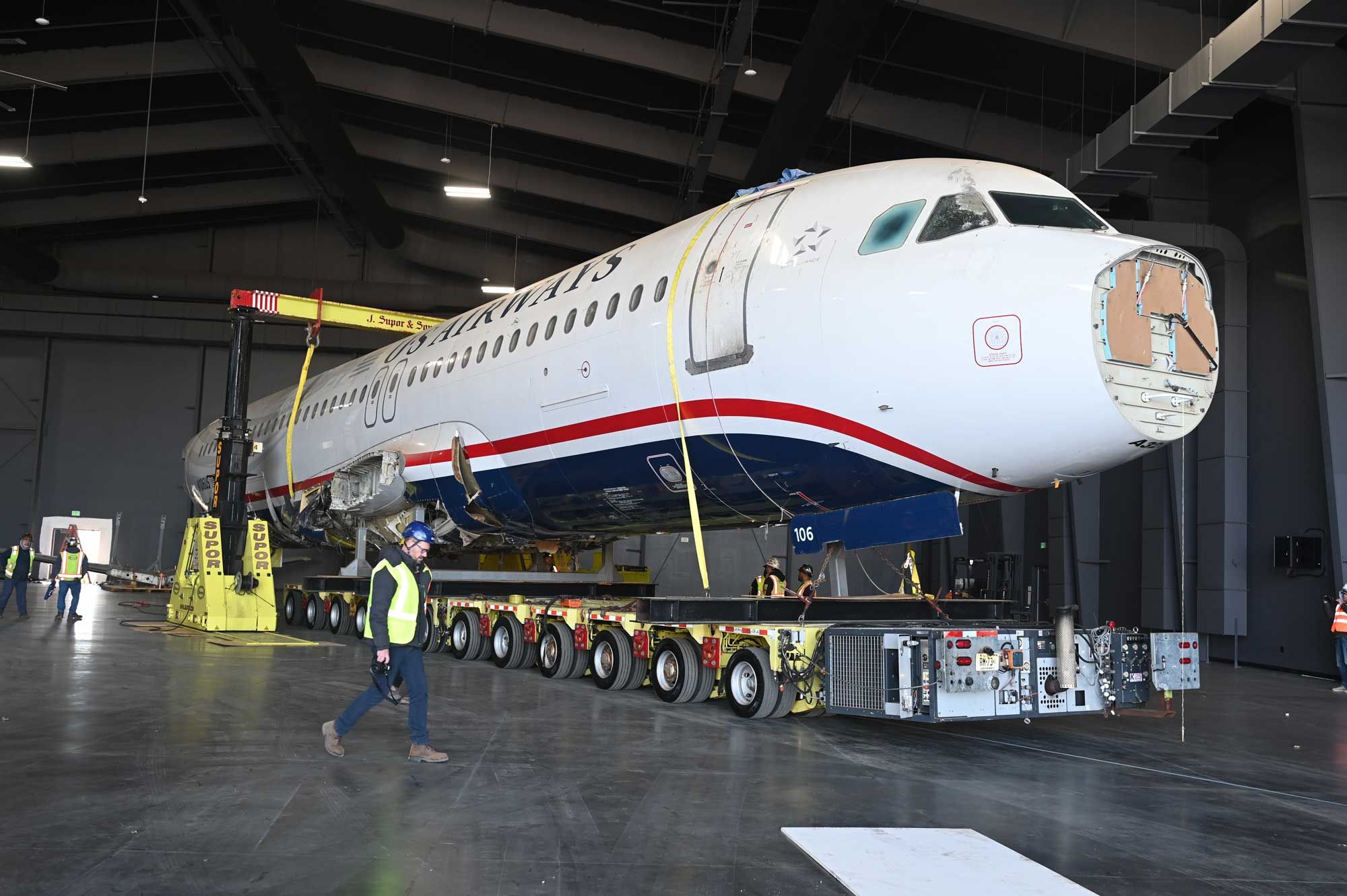Summary
- N106US, the A320 from the Miracle on the Hudson, was preserved for many years in the Carolinas Aviation Museum.
- The museum will reopen as the Sullenberger Aviation Museum in June 2024, showcasing the A320 exhibit.
- The Sullenberger Aviation Museum aims to inspire the next generation of aviation professionals.
It has been over 15 years since the famous Captain Chesley "Sully" Sullenberger landed an Airbus A320 on the Hudson River on a cold winter afternoon. The accident became known as the Miracle on the Hudson as the aircraft safely landed on the water without any casualties. The A320 became an essential part of American aviation history, so let's look at where it is now.
A 25-year-old Airbus A320
The aircraft that miraculously landed on the Hudson River was operating a scheduled passenger flight for US Airways from New York La Guardia Airport (LGA) to Charlotte Douglas International (CLT) and on to Seattle-Tacoma International. US Airways Flight 1549 departed New York with 155 occupants, including 150 passengers and five crew members.
After hitting a flock of birds and losing both engines, the crew was forced to ditch the aircraft in the river, which required precision and concentration. The aircraft that operated the flight was an A320-200, registration N106US. It took its first flight in June 1999 before being delivered to US Airways.
Severely damaged and waterlogged, the plane was pulled from the water on January 17 and investigated to determine the cause of the crash. The aircraft was moved to Kearney, New Jersey, where analysis of the accident continued. Satisfied that the aircraft had lost engine power due to a bird strike, the next priority was what to do with the plane.
In early January 2010, insurance firm Chartis put N106US up for auction online. The sale lasted three months, during which no valuation was given. However, the aircraft was not purchased, understandably due to the nature of the damage and scale of the plane.
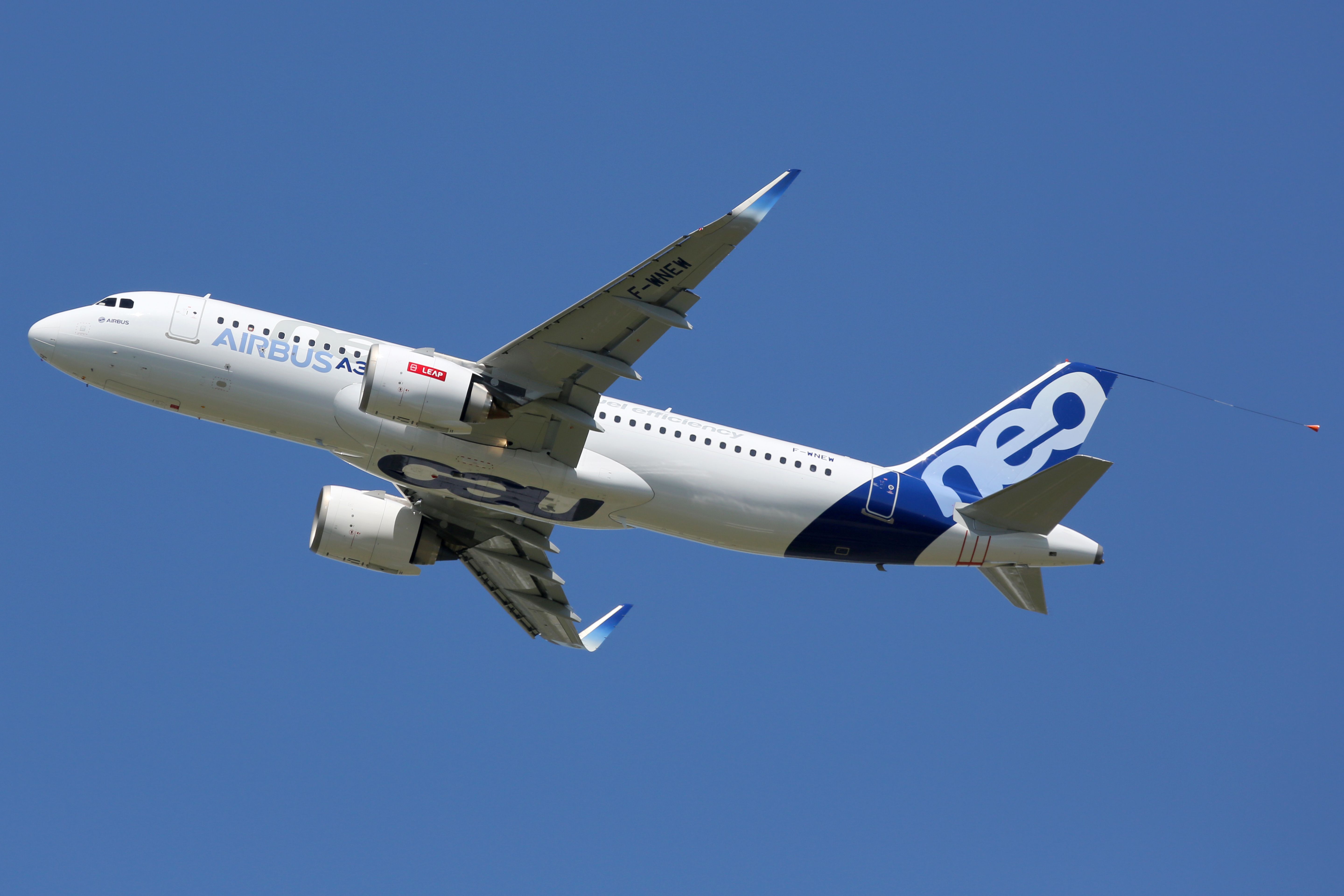
Did You Know Certain Airbus Aircraft Have A 'Ditch Switch' For Emergency Landings?
The A320, A330 and A340 have a dedicated switch to help prepare the aircraft for water ditchings.Preserved in a museum
Still, N106US was not destined for the scrapyard. On June 10, 2011, the American International Group (AIG) donated the aircraft to the Carolinas Aviation Museum. According to officials at the museum, the aircraft was a game-changer for revenue. It took the site from a relatively unknown collection of aircraft for aviation enthusiasts to a place of national significance.
Visitors to the Carolinas Aviation Museum could not only see the plane but also witness passenger testimonies and learn more about the dramatic accident. However, the Carolinas Aviation Museum closed in 2019 and is set to reopen as the Sullenberger Aviation Museum on June 1, 2024. The museum underwent a five-year reimagining project.
Moving to a new home
The state-of-the-art main exhibit gallery, adjacent to Charlotte Douglas International Airport, measures 35,000 sq ft. In November 2023, the museum began moving its collection of up to 40 commercial, civil, and military aircraft, including the crown jewel of the collection - N106US. The museum's team of collections staff and volunteers transported and reassembled the aircraft to its showcase-ready state.
Also part of the logistics was New Jersey-based J Supor & Son, the team that initially removed the aircraft from the Hudson River and later transported it to Charlotte. When the museum fully opens, the "Miracle on the Hudson" exhibit will include salvaged passenger and crew items like beverage carts, life preservers, and luggage, as well as a theatrical experience with a large screen for guests to watch the journey of the A320 on the day of the accident.
Sullenberger Aviation Museum aims to inspire, educate, and elevate by reimagining the greater Charlotte region as an aviation and STEM hub to inspire the next generation of aviation and aerospace professionals. Sullenberger Aviation Museum President Stephen Saucier notes,
"The Sullenberger Aviation Museum has for more than a decade played a crucial role in preserving the history of one of our country’s most iconic aviation events representing the indomitable human spirit and an unyielding dedication to passenger safety."
"But our reimagined ’Miracle on the Hudson’ exhibit isn’t just recounting the past; it’s a catalyst for the future. The Sullenberger Aviation Museum aims to ignite the dreams of aspiring aviators, engineers and innovators who will inherit and perpetuate Capt. Sullenberger’s legacy of excellence, heroism and courage."
Visitors to the museum's main gallery will also have a chance to see a replica of the Wright brothers' Wright Flyer, an F-4S Phantom II, which is one of two existing Skystreak aircraft used to test breaking the sound barrier, and a TV-1, America's first operational fighter jet.
Want answers to more key questions in aviation? Check out the rest of our guides here.
The Miracle on the Hudson
On January 15, 2009, US Airways Flight 1549 took off from LaGuardia at approximately 15:25. About two minutes after takeoff, the narrowbody flew into a flock of Canada geese, causing severe damage to both engines and an almost complete loss of thrust. The crew repeatedly tried to restart the engines but were unsuccessful. Passengers also heard loud bangs and saw flames coming from the engines, followed by an odor of fuel.
Sully notified LaGuardia air traffic control that he intended to return to the airport, but it soon became apparent that he wouldn't make it as the plane continued to glide. He also asked for landing options in New Jersey and was cleared to land on Teterboro Airport Runway 1. It became apparent to both Sully and Skiles that the best option for the aircraft was the Hudson River, where the plane eventually ditched.
Following the captain's order, the cabin crew began evacuating passengers through the four overwing window exits onto an inflatable slide raft. All passengers and crew evacuated safely, but there were 95 minor injuries and five serious ones. Captain Sullenberger and First Officer Skiles were ultimately recognized for their heroic efforts.
Have you seen N106US? What do you make of the aircraft's history over the years? Let us know what you think in the comments.

